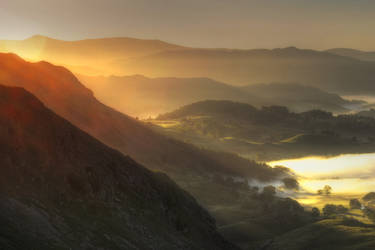Firstly combining the elements of many of the articles that have already been written in this series (see the bottom of this article for links) will assist anybody in gearing their photographs up to look more professional. However IsacGoulart summed it up quite neatly with this rather epic quote...
“Beauty can be seen in all things, seeing and composing the beauty is what separates the snapshot from the photograph."
Getting your work up to some sort of standard is always tricky. Especially if you are setting the standards yourself, because let's face it, we are own worst (and best) critic and creating the perfect work is almost impossible - especially if you are like me and rarely recognize anything awesome in what you do. But the challenge is to set your shots up so that you are thinking and acting like a Pro. It isn't as hard as it might seem.
The Key is Composing...
Like any well known artist, the key to success is behind how you compose your work. Whether you write music, conduct an orchestra, write novels, paint or manipulate work, the composition is where you begin. This is of course presuming that you have the ideas and concepts first - the key to creativity is a whole other article altogether. Maybe even a book!
There are no hard and fast rules. The perception is that the The Rule of Thirds is law (which it's really not) Rules were made to be broken, and you have to assess your situation and surroundings before you can tackle how you compose a piece. The golden ratio principle is another way to describe how proportions should work in photographs in order to draw your eye to the desired target, which, after all, is the point of composition. For more information, see the wiki article on the Golden Ratio.
There are options within many DSLRs to switch on a grid that will appear in the viewfinder - this helps tremendously when lining up images, figuring out leading lines and adhering to the rule of thirds. Read a bit more in this article article exploring the four rules of photographic composition.
In the above shot it seems natural and fitting that the couple are central in the image. You don't have to frame them in just a third of the camera view, it suits them to be the center of attention.
In this shot above, it fits the image more to give it a sense of movement, therefore composing the shot without the car being central in your viewfinder is better than framing it right in the middle. With transport and things that can move, it's often really nice to have some empty space - a suggestion of where the car/train/bus might end up. You're telling a story, you're not just capturing a moment. Think like a writer, but with your camera instead of a pen.
With a little directing...
You need direction. It's important that when you take a photograph, you note down where your eye is drawn to in the view finder. Some particular areas of photography get away with being mixed up and jumbled with leads for the viewers eye. Abstract Photography in particular may have no lead focal point. But if you're composing portraits, still life, animals, plants or nature, then a little more thought and care needs to go into where your viewers eye will end up. Is the place you're dragging people into the place that you want them to be dragged? The human eye doesn't necessarily focus on the center of an image first. It's drawn to the most interesting part, the brightest part, the flare of the sun or a fantastic hue. Or a lens spot/over exposed sky or smudge. So work on eliminating those too!
Perhaps an Orchestra...
Any great piece of work isn't achieved all by itself. You need an Orchestra of elements to work with. Those could be practical accessories like a remote shutter, a tripod, filters and the post processing tools of Photoshop. Or indeed your Orchestra could be made up of lighting, wind, backgrounds and texture. Every single part of a photograph is scrutinized and noticed when you claim to be a pro. When people in the know view your work, your flaws will be rather apparent to them, which can be a detriment to your credibility.
Skipping over something fairly easy to notice such as a hand waggling behind someone's head - is a rookie mistake.
Be careful with what you're framing. If it's people and somebody is in the way, get them to move. If there are objects in your way, crouch down, or get a chair and stand tall - anything to get the perfect shot.
Some Reflection...
Make the most of what you've got in front of you. Using reflections, whether that's in glass, windows, floors or even lakes and puddles - makes your work that much more interesting. If you want to get even more creative, work with highly polish cutlery, glassware and bottles - the more individual and unique the objects are that you use in your work, the more likely you can compose it in ways that haven't been done before.
A bit of negativity doesn't hurt...
Negative space in terms of Photography is heaven. Make the most of that dead space you have there, especially with things like lonesome trees or independent pieces of magnificent architecture. Use empty skies, endless green hills or a stretching horizon beyond the sea and make them part of your image.
Not forgetting an Audience...
Photography hardly ever starts off as being forced. I rarely come across somebody who has had to get a job as a photographer before they've absolutely and completely fallen in love with the hobby. So you've got to remember that you shoot for yourself first and foremost, and when it becomes a chore, when it becomes too difficult and you get frustrated beyond believe - something has to change. As soon as you start taking royalties for your work, and start becoming recognised as a professional - you have standards that you will force yourself to live up to. But composing for others can take its toll. So don't forget to have fun - disregard everything in this article from time to time and develop your spontaneous side along with your inner Pro.
This Article was carefully composed by...
~ Aeirmid Kaz-D IsacGoulart pica-ae DaPineapple







